KitchenAid Pro Line 2-Slice Toaster – the best toaster I've tested
I tested the The KitchenAid Pro Line 2-Slice Toaster on everything from bagels to pop tarts
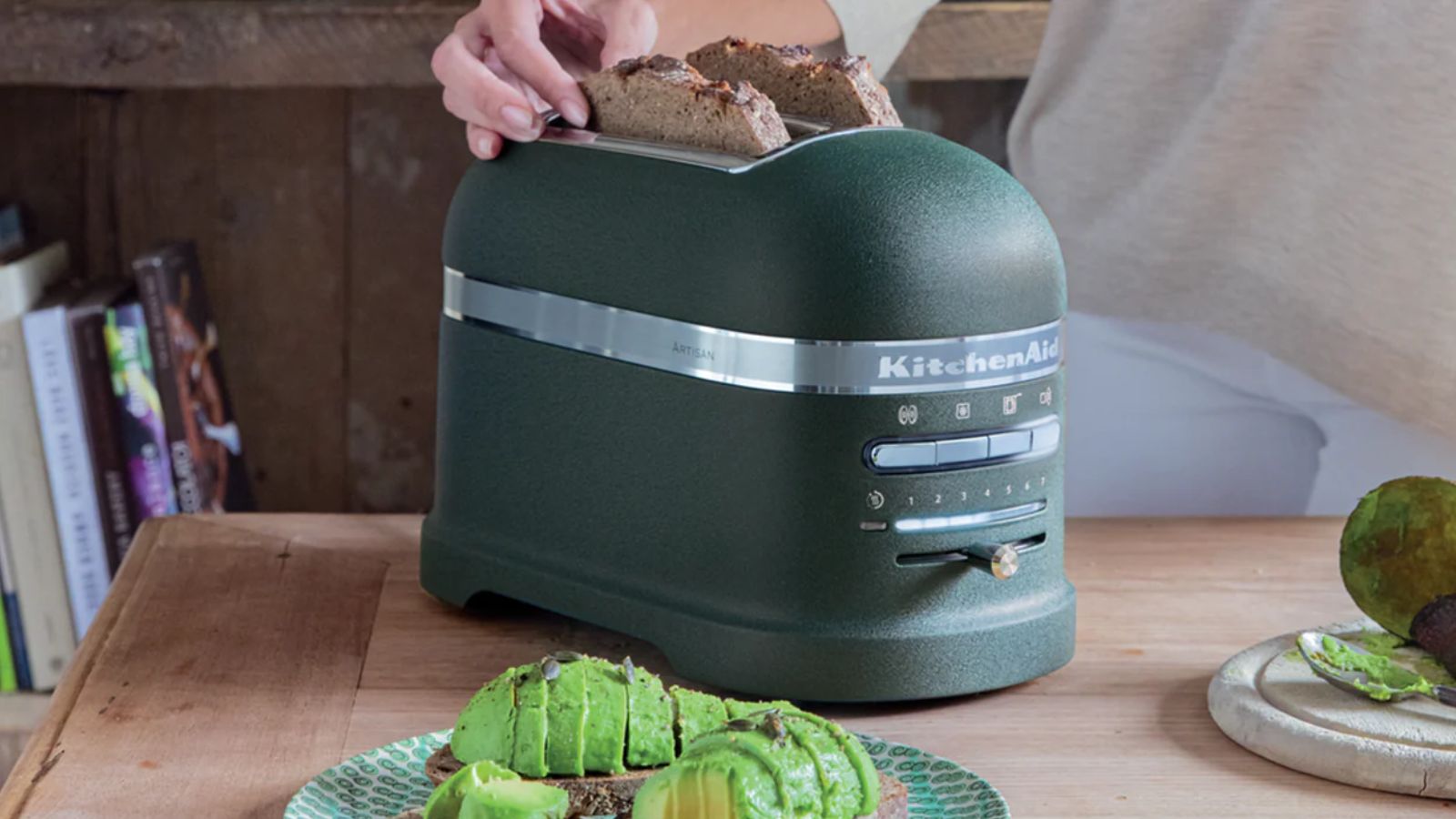
The KitchenAid Pro Line 2-Slice Toaster is the perfect blend of functionality and luxury. It's a treat to toast in, with plenty of automated features and even, consistent results. It's not the most powerful on the market though.
-
+
Range of color options
-
+
Lots of luxurious, but useful features
-
+
Low maintenance finish
-
+
Consistent toasting across different breads
-
-
Quite light toasting results
-
-
Design isn't for everyone
-
-
Expensive
You can trust Homes & Gardens.

KitchenAid has been praised for decades on account of their capable and beautiful stand mixers. Now, they’ve expanded their offering to coffee makers and kettles, but if you want the best of the best, I suggest you take a look at their Pro Line Toaster.
Unlike other high-end toasters, this doesn't just look the part. While it looks incredible, it's a simple, straightforward toaster that makes consistently perfect toast. That's before you get into all the more luxurious features, like the auto-lifting and lowering slots. It's a true contender among the best toasters.
I've tested it for months and actually ended up buying one because I loved it so much. It might not offer exactly what every single home needs, but it sure will please ninety nine percent of us.
Specifications
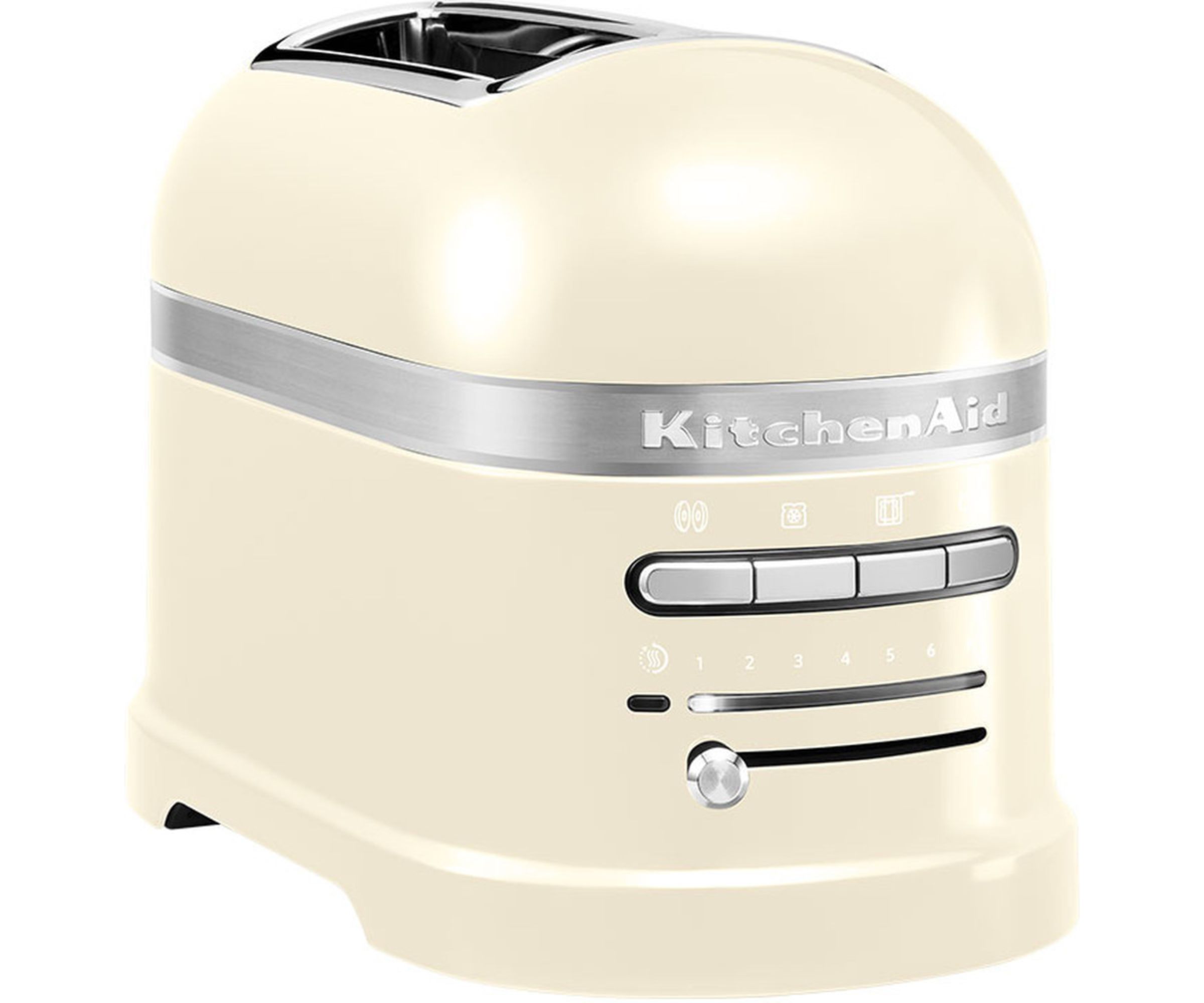
| Dimensions | 13.7"D x 7.1"W x 8.9"H |
| Weight | 10.1 lbs |
| Power | 120 Volts |
| Material | Aluminium |
| Slots | 2 |
| Settings | Bagel, frozen, grilled cheese, keep warm, a little longer |
Who would it suit?
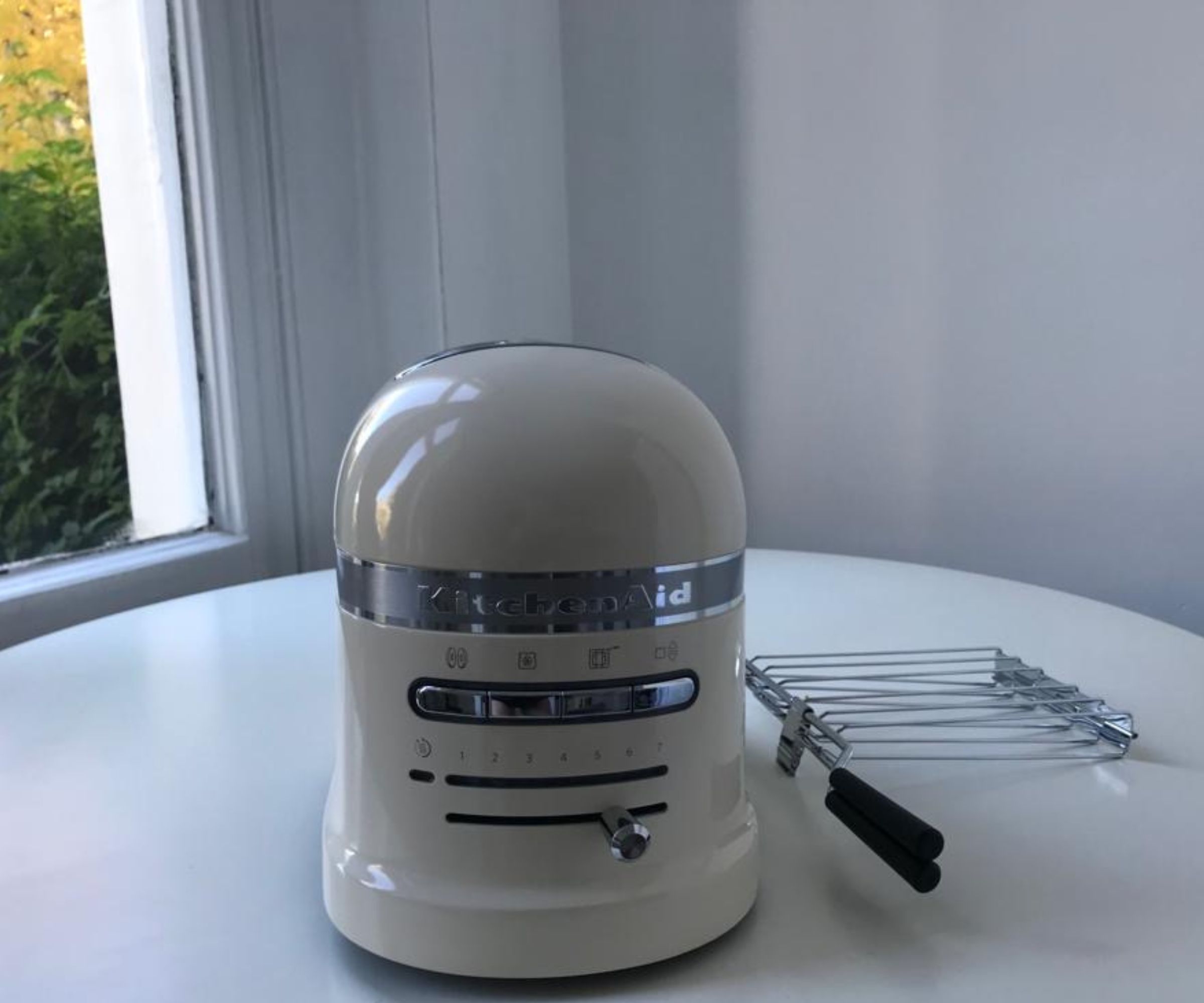
This is a luxury toaster, so best suited to those with big budgets. At around $300, it’s one of the most expensive toasters on the market. While that's overkill for most of us, if you have the money, you what you pay for. It makes great toast, looks beautiful, and the build quality is second-to-none, so it’s good if you want a toaster to last for a lifetime. The features are all useful (especially the bagel and auto-lift). Plus, the different finishes are perfect for those cultivating color-conscious kitchens.
With only two toasting slots and a relatively slow toasting time, this isn’t particularly well suited to large homes and big families. You can opt for the larger Pro KitchenAid Pro Line Four Slice Toaster, available at Amazon, , which reviews just as well, but this takes up more space on the countertop. Whilst the auto lift and lower function feels super premium, I’m also very aware that this is an unnecessary luxury for most people.
Unboxing

The KitchenAid comes in a big box. It’s deceptively big because this is actually a really compact toaster, but KitchenAid has built lots of protective, recyclable packaging around it. There’s also a sandwich press attachment which you can insert into the toaster when you have a hankering for a grilled cheese, and a neat cable manager underneath to keep everything tidy on the countertop.
In true KitchenAid style, this comes in all their Artisan colors: almond cream, empire red, onyx black, frosted pearl, and more. I tested almond cream and it looked awesome. I’ve already tested the KitchenAid Pro Line Electric Kettle, available at Walmart, in almond cream, so pairing the two together on my countertop looked incredible. My only caution would be that this is pretty heavy for a small appliance – I wouldn’t like to be lifting it above my head to put in a cupboard, so I would recommend that you either store this low down or keep it on constant display.
What is it like to use?

The KitchenAid balances versatility and simplicity really well. There’s a timer with an LED countdown, so you can see how long your toast has left. There’s also a bagel button, defrost button, and 'a little longer' button. This way, you and your toaster are always on the same page about what the end goal is.
Test 1: White bread

Sliced white bread is the most elementary test for any toaster. If it can’t do this, it can't do anything. I placed two slices of white bread into the slots and the KitchenAid detected the weight, made a light bell sound, and began to auto-lower my toast down. I almost laughed at how unnecessarily luxurious this feature is.
This was the first run through the KitchenAid had ever had, but I gave it a standard two minute setting. One minute forty seconds later, my toaster made a light bell sound and lifted up two, pale slices of toast-bread (they hadn’t been turned to proper toast yet). I lowered them for another minute, hoping to give the toaster a chance to warm up. 52 seconds later, I heard the chime and saw my toast lift up. It was perfect: the golden color evenly covered both sides of both slices of toast. I was pretty pleased with myself (and the toaster).
Design expertise in your inbox – from inspiring decorating ideas and beautiful celebrity homes to practical gardening advice and shopping round-ups.
Test 2: Sourdough

Sourdough is another great test for any toaster. It needs more heat, doesn’t brown as easily, and can come in a range of shapes and sizes. I bought a big, wide, artisanal loaf for testing and only one of our toasters didn’t require me to cut my slice in half (if you're interested, it was the Smeg Four Slice, available at QVC). It was no surprise that the KitchenAid couldn’t fit it: it’s a compact toaster.
After cutting my slice in half, I put the two chunks in the toaster for three minutes, which isn’t really long enough, but I didn’t want to overdo it. It didn’t come as any surprise that this needed another two minutes (actually one minute forty) before it popped up, looking golden). The toaster hadn’t dried it out and had got the most even toast coverage that I’ve experienced in my toasting tests. It was hot enough to melt the butter into all the air bubbles of my slice, but not too hot for me to take a big bite straight away. It was the perfect texture: crunchy on the outside, but warm and springy on the inside.
Test 3: Bagel

I think that a bagel function is a toaster essential, so I was glad to see this toaster had a bagel mode for me to test out. The top of the toaster has a useful icon to show you which way your bagel needs to sit in the toaster. All you need to do is press the bagel button and the KitchenAid will do the rest.
I put my bagel in for one and a half minutes (although this was only one minute twelve seconds in practice) and when it lifted up, it looked like it had hardly seen the heating elements. I repeated the one and a half minute setting three times (so my bagel probably had just over three minutes in total) before I was happy with the toasting level. As you get used to your toasting settings, you’ll be much happier setting the bagel to four and leaving it for one run through, but for my first toast I was constantly checking on the toasting levels.
On flavors and textures, this was flawless. The outside of my bagel was soft, the cut side had a good crunch and the very centre was soft and doughy. It's perhaps a little pale for some people, but I was able to achieve a slice of toast exactly as I like it.
Test 4: Gluten-free bread
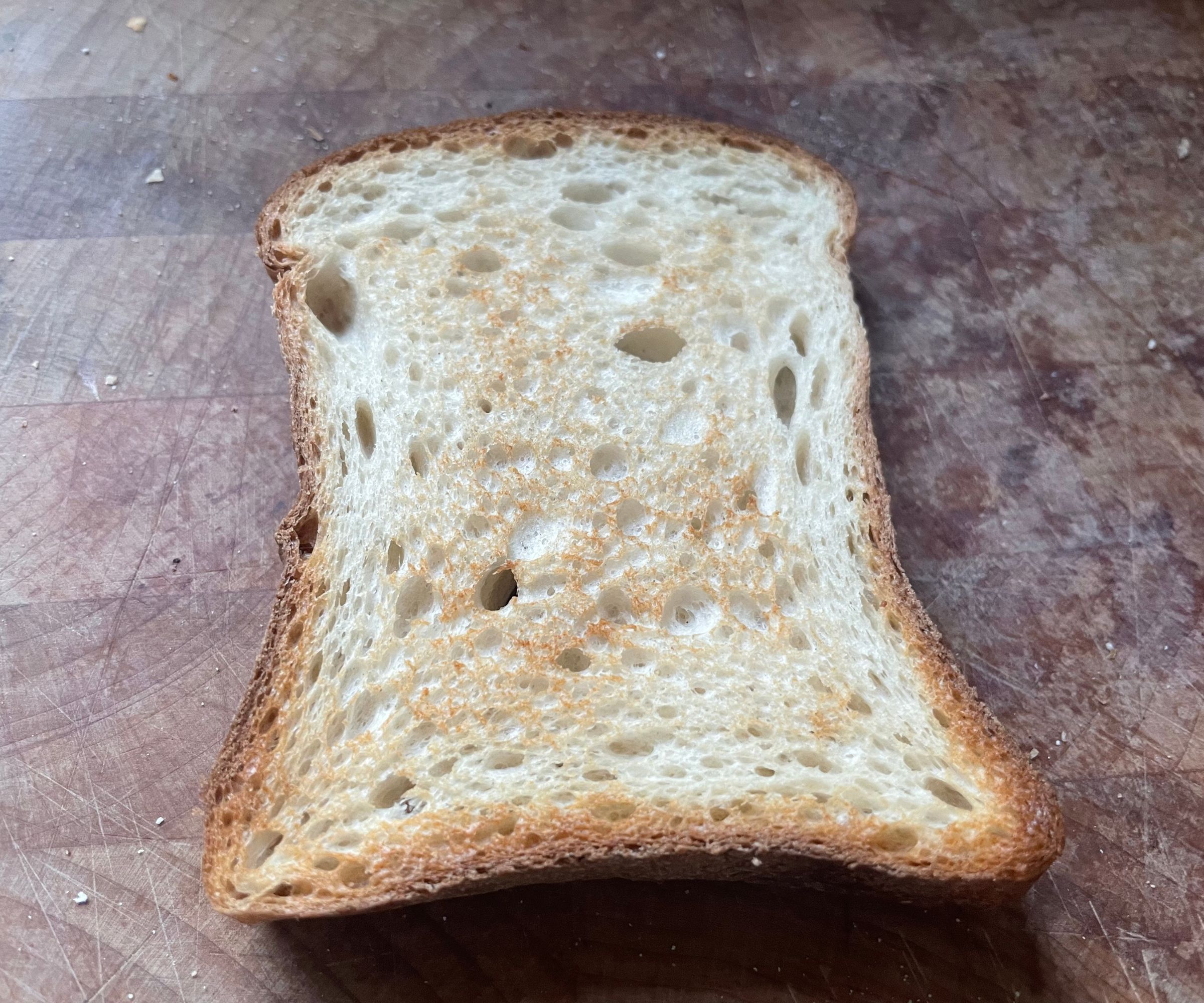
Gluten-free diets should never mean compromising, even if the bread is a little trickier to toast. I was apprehensive about how well this would turn out, because the KitchenAid had done such a good job of normal white bread, so I wondered whether the generic settings would suit a different bread.
I placed two small slices into the KitchenAid and was struck by how high they sat. Even small pieces of toast are easy to lift out and in because they’re almost completely out of the toaster when it’s not on. This came in useful when I made my own loaf and the end pieces were imperfectly shaped and quite small to say the least.
After one minute forty in the toaster both slices of gluten-free toast popped up, evenly warmed, golden across both sides, with a good crunch. They hadn’t lost their fluffy middle section either. It was an impressive performance overall.
Test 5: Fruit bread

Enriched doughs are delicious, but temperamental. Fruits are also pretty tricky to toast without burning, so I thought I’d really test the KitchenAid’s skill set by toasting a slice of fruit bread.
Given that it is such a delicate loaf, I started on the single minute setting. The fruit bread was warm, but needed another minute. In total, the fruit bread only had one and a half minutes in the toaster, because the settings don’t fully equate to timings. That’s on the speedy side for toasters, but it was warmed right through. Both sides were golden and crunchy, but the middle section was light and fluffy still. None of my fruit had burned either. It was still delivering pure perfection.
Test 6: Pop tarts
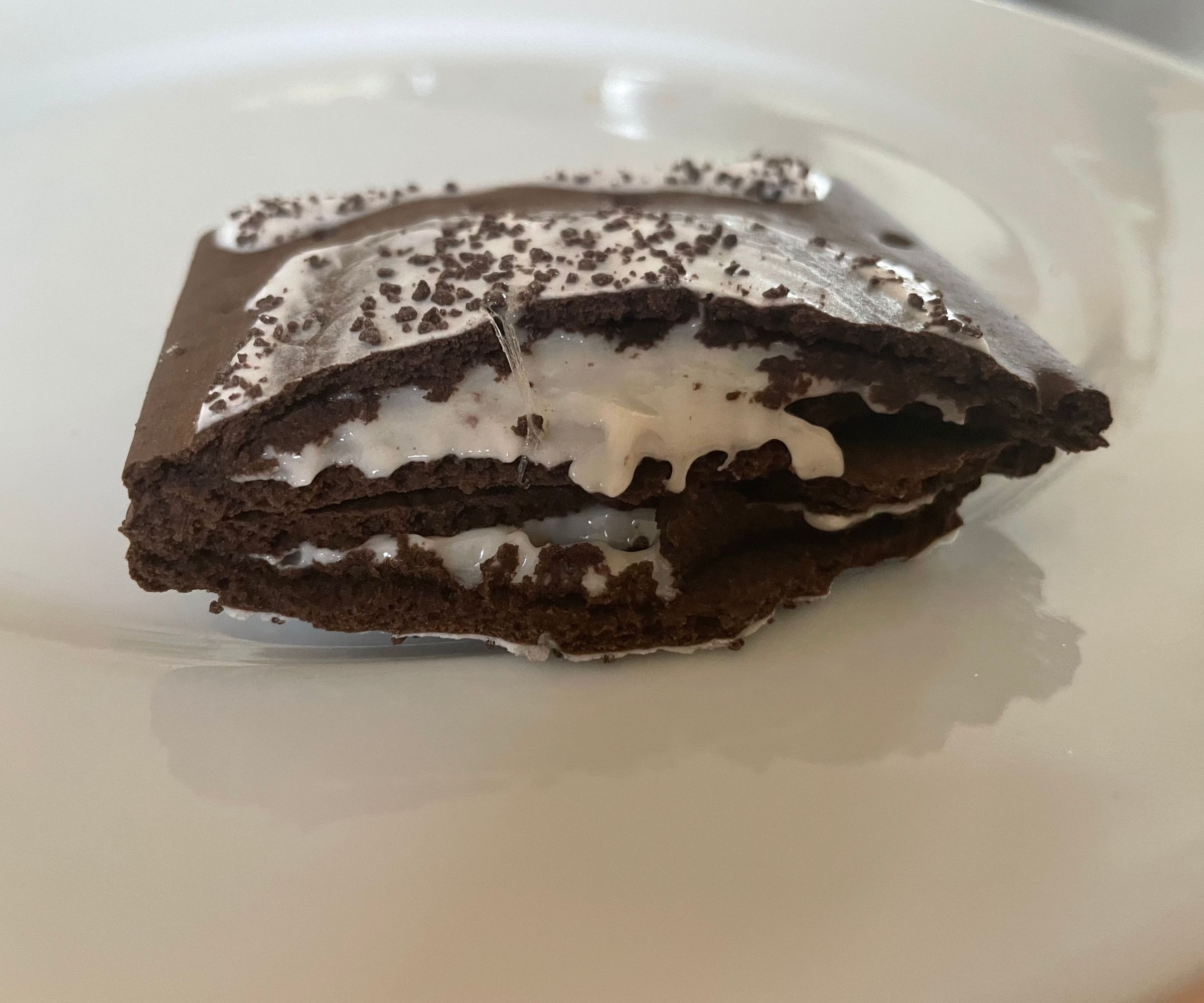
My final toaster test is the all-important pop tarts. These need to be warmed right through, but still treated with care. I don’t want icing in my toaster slots or jam sticking anywhere.
I put my 'Cookies n Cream' flavor tarts into the toaster. Without any specific pop tart setting, I thought I would give two and a half minutes a test. This was the optimal time (even though it only amounted to two minutes and three seconds). They popped up and I could sense they were done. All my icing was perfect, my filling was gooey, and the biscuits were crumbly. There’s little else to say (and even less pop tart left untouched on my plate).
Cleaning, storage, and maintenance
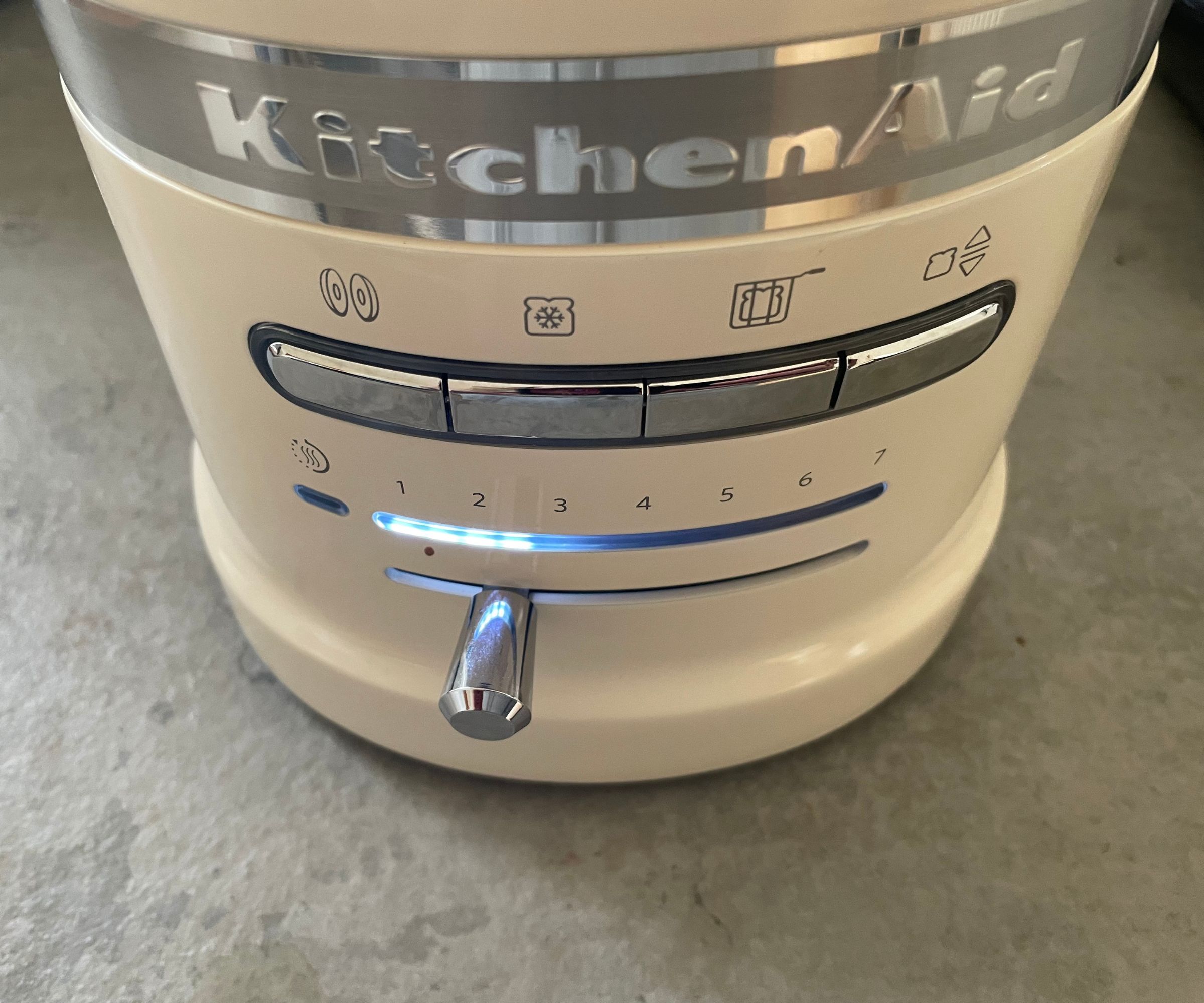
This is an incredibly low maintenance. I had every sort of butter, jam, conserve and preserve you can think of on hand and I didn’t need to give give this toaster a wipe down once. It didn’t show fingerprints and there were very few crumbs in the crumb tray. I couldn’t help but wonder if the gentle auto lift and lower helps to stop springing crumbs everywhere.
As for storage, this is a relatively heavy toaster, so I wouldn't recommend lifting it into high cupboards or awkward spaces. There's already useful cable storage underneath the toaster and an attractive design that's perfect for keeping out on display. I live in an urban apartment and kept my previous toaster stored away because it was a) unattractive and b) pretty hue. I was happy to keep the KitchenAid on countertops 24/7. It looks good without dominating the space.
How does it rate online?
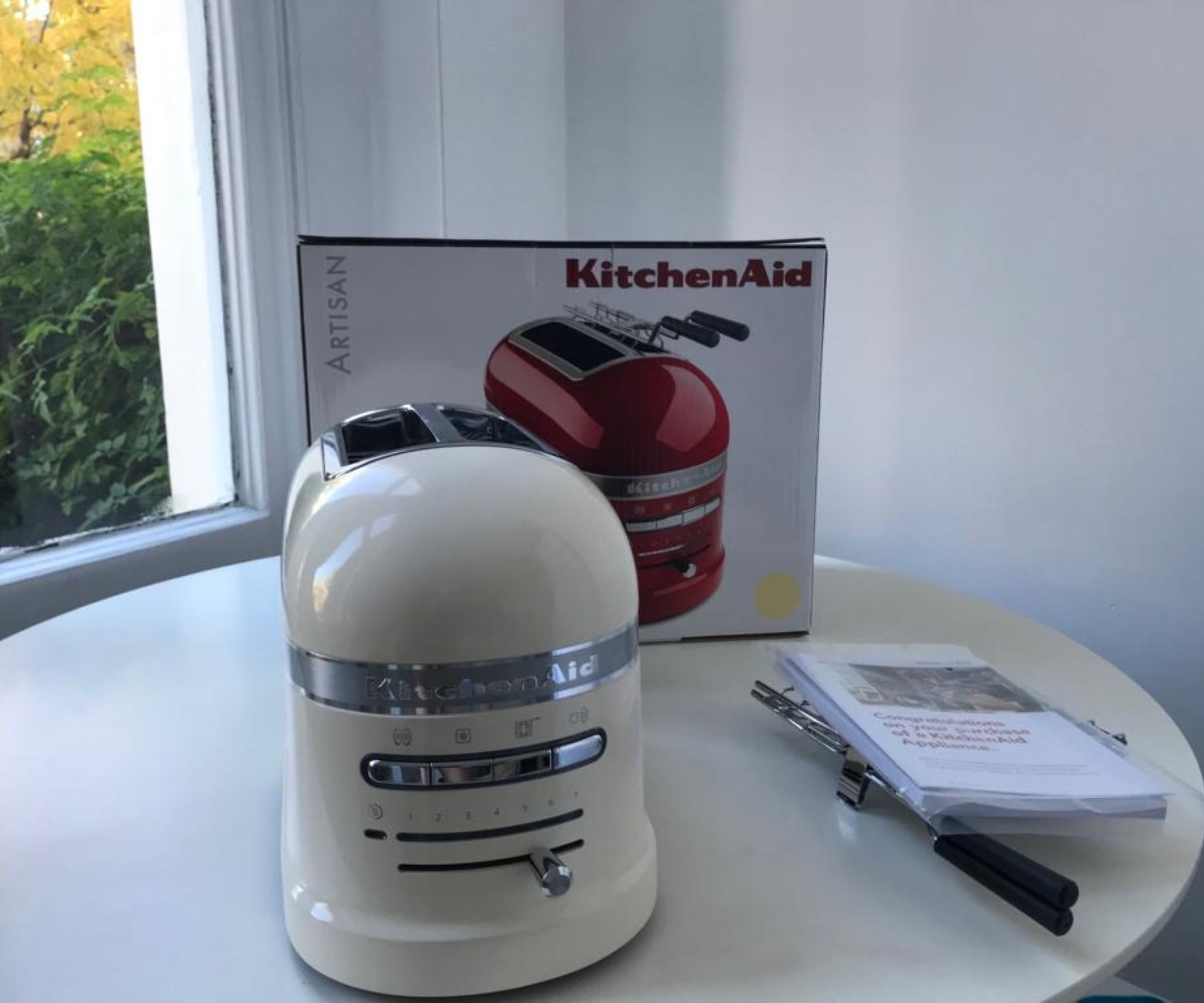
I was pleased to read that everyone else loved the KitchenAid as much as I did. It was described as a 'status symbol' and 'small grill', which everyone felt warranted the big price tag. As you might expect, everyone commented on the aesthetics of the Artisan as well as the easy controls and consistent toasting capabilities. I particularly enjoyed the pictures of KitchenAid trios on people's countertops: the stand mixer, toaster, and kettle, proudly lined up in social-media worthy set-ups. It's clearly a product to be proud of.
In fact, almost nobody could criticise it. Some people said that they would have liked the controls to be a little fiercer, but I think it's better to be gentle and this still does a good job of toasting. Another feature which was divisive was the alert noise that the toaster makes when it begins and finishes toasting. This is the same noise across all KitchenAid appliances, so I liked the consistency. It's also quite a gentle sound, but isn't to everyone's tastes.
How does it compare?
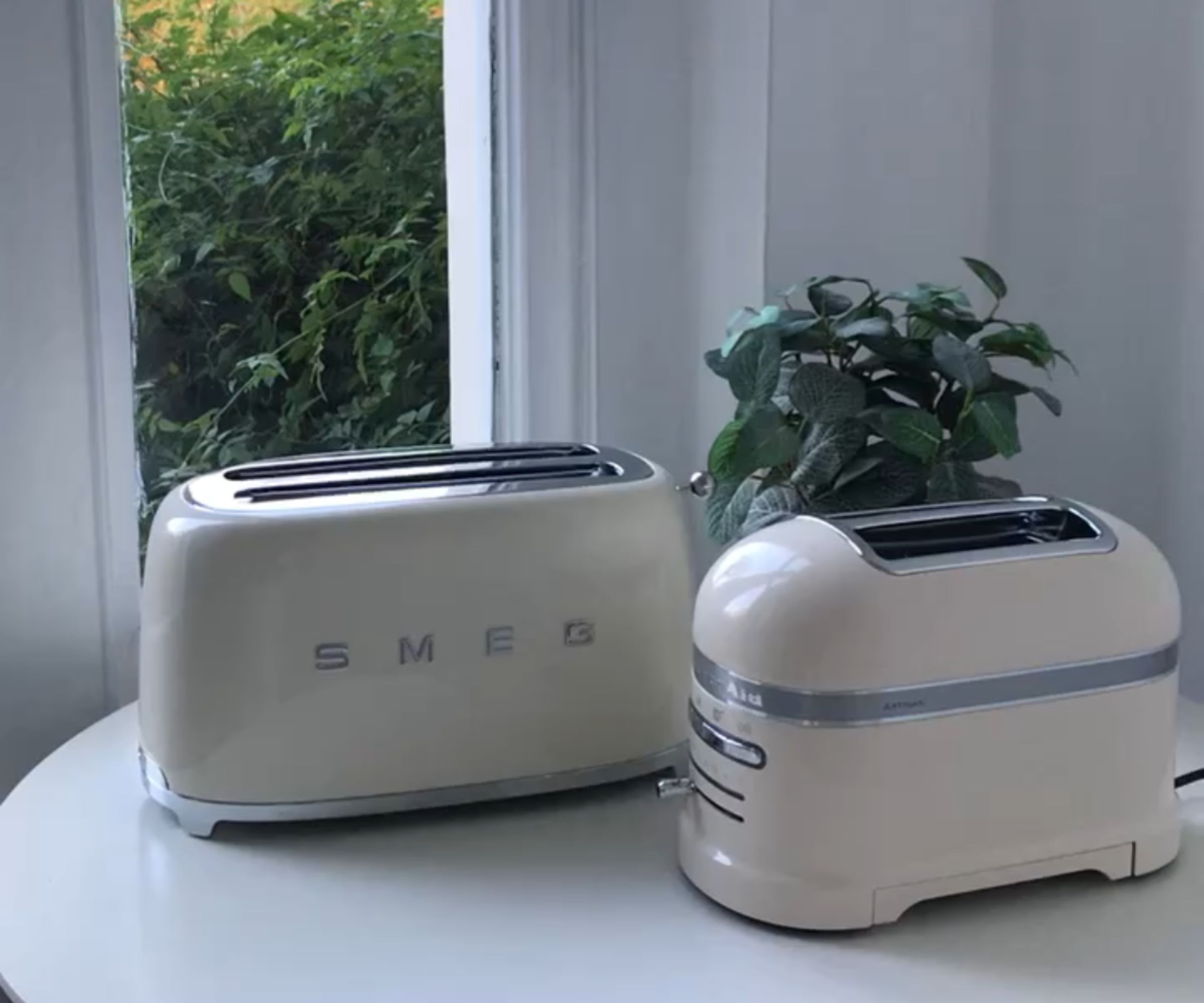
KitchenAid makes another two-slice toaster, which is much more basic (and a quarter of the price). The functional, stainless steel finish sets the tone for everything you need to know about it. The KitchenAid Manual Lift 2-Slice is hard-working, durable, and reliable. For all of its functionality, the Manual Lift lacks the niceties offered by the Pro Line: I had to wave goodbye to my auto lift and lower function, as well as the beautiful design, and grilled cheese sandwich plates. Performance wise, the Pro Line felt a little more measured and refined, because it didn't really get any fiercer throughout my tests. Most toasters heated up and got quicker and less consistent, including the KitchenAid Manual, but overall both are excellent toasters.
If you don't like the idea of sacrificing aesthetics, but you want a little more versatility, check out Breville's The Toast Select Luxe, available at Amazon. This compact, two slice toaster is available in a range of classic colors. It looks really chic and it's not just a pretty face. This has the most versatile setting range I've seen, with options for rye bread, sourdough, waffles, and pop tarts. You have almost all the same luxuries as the KitchenAid Artisan (but not the auto lower and lift), for a similar price. This is the KitchenAid's toughest competition.
Should you buy it?
I'd recommend this toaster to everyone. I've really committed to the phrase 'put your money where your mouth is', because I ended up buying this after our tests were concluded. I love it and have gotten used to the comforts of the auto-lift and lower. However, I recognise that it's not for everyone: the luxuries are a little unnecessary and it is expensive for its size.
How we test
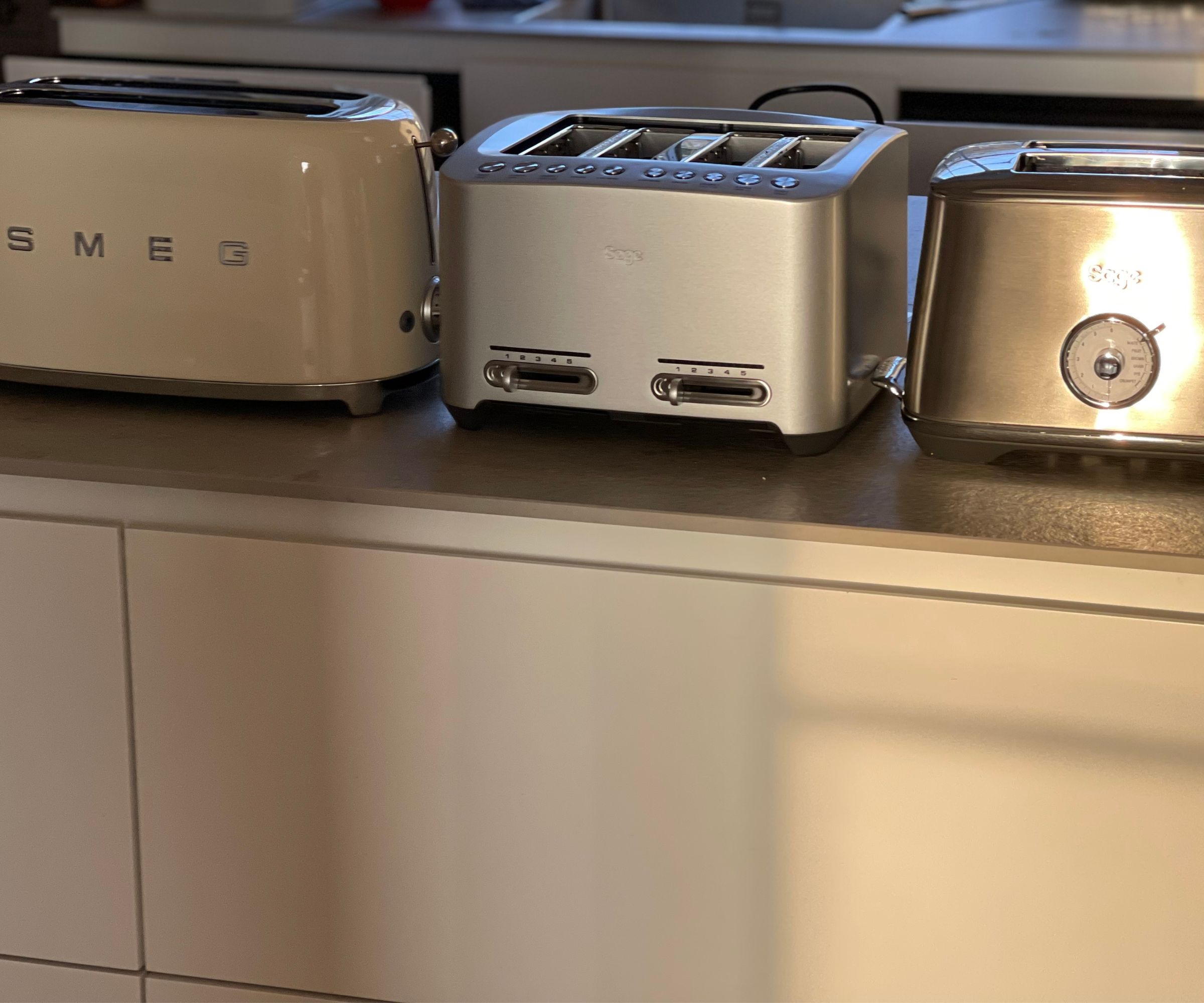
At Homes & Gardens, we test all of our toasters thoroughly before writing a review. If you're interested in finding out more about how we test and review a toaster, you're in the right place.
Before anything, we research our toasters. Our team of experts is always looking for the latest and greatest models on the market. Once one has caught our eye, we'll read about it before calling one in.
When we have the toaster in our hands, we'll get to work. I tested all of these toasters for at least a week. In the case of the KitchenAid, once I had finished testing it, I bought one and have been using it for months. I love it. Every toaster gets at least one week of usage though, because, that way, we can grasp what they're like to use in the middle of the morning rush as well as on a slow Sunday.
You'll spot that we use a range of different bread types, because we want to see how it can handle a range of textures and flours. We always start with basic white bread, because that's a household staple, as are pop tarts, which we also test. These require a toaster to be gentle with the iced outside, but thorough enough to cut through to the gooey center. We'll also try sourdough, because that can take longer to toast and often comes in odd, artisanal shapes. For the gluten-free eaters, we also look at gluten-free bread, again, because we know it can be a little more sensitive to heat and it's good to know if your toaster can handle it.
As I said above, we make sure to check how well a toaster can toast bagels. Most have special bagel settings, because these need to be light on one side and stronger on another. If they can't do that, you might end up with a leathery bagel. Our team also wanted to test enriched breads, such as fruit bread, which can burn easily or not toast fully through. It's important to see how well a toaster can handle more complex breads.
For each bread type, we test how long a toaster takes to complete them. When they pop up, we look at how evenly they're toasted and we taste how thoroughly they're toasted throughout the cross section. A bagel is a great example of why this is important: it should be doughy in the middle, crisp on the cut side, and still soft on the outside.
Our experts also think about factors such as cleaning, storage, and maintenance, because they can have a huge impact on how motivated you are to use an appliance. If it's more work than you think its worth, no matter how well a toaster works, you won't use it.

Laura is our eCommerce editor. As a fully qualified barista, she's our expert in all things coffee and has tested over thirty of the best coffee makers on the market. She has also interviewed Q-Graders and world-leading experts in the coffee industry, so has an intimate knowledge of all things coffee. Before joining Homes & Gardens, she studied English at Oxford University. Whilst studying, she trained as a master perfumer and worked in the luxury fragrance industry for five years. Her collection of home fragrance is extensive and she's met and interviewed five of the world's finest perfumers (also known as 'noses'). As a result of this expansive fragrance knowledge, she always puts quality and style over quantity and fads. Laura looks for products which have been designed simply and with thoughtful finishes.